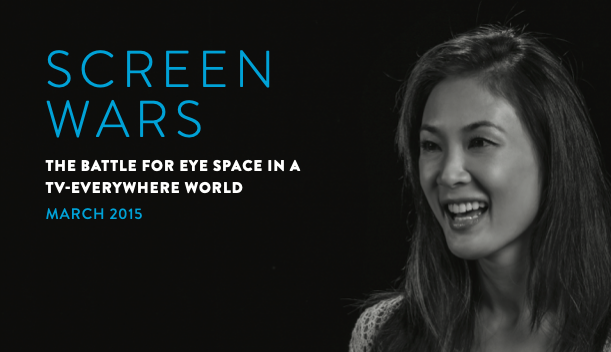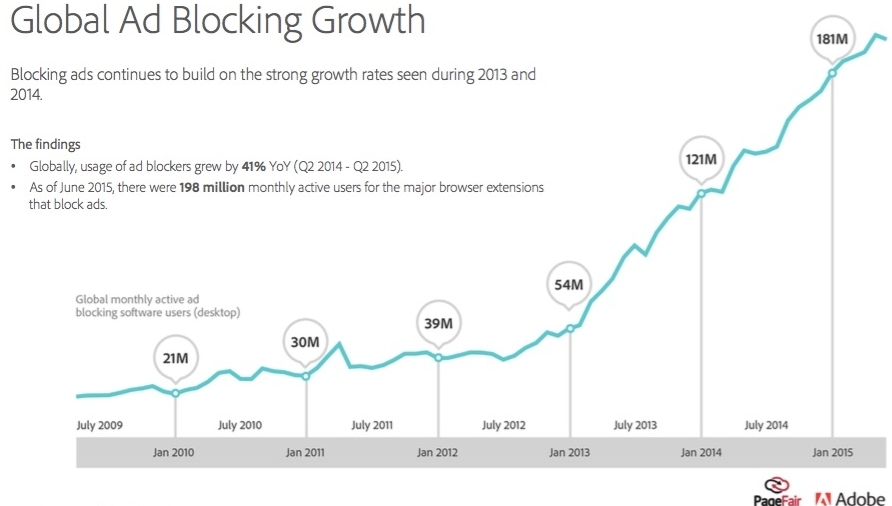
![]()
May 26, 2015
The New York Times describes Charter Communications’ $55 billion bid for Time Warner Cable as the result of “a tectonic shift in how Americans watch and pay for television.” How tectonic is it? Recent surveys document two interconnected trends: More and more television is being viewed on computers, smartphones, and other devices; and at the same time, there’s an upsurge in the amount of television that’s streamed rather than watched live.
For large numbers of viewers, what we now call television is becoming uncoupled from the TV screen, from the TV schedule, and from conventional TV providers like cable and satellite. The implications are huge. Network programmers will find their once all-important scheduling function becoming increasingly obsolete. And cable and phone companies will find their Internet business outpacing their TV bundles both in importance and profitability.
Deloitte’s “Digital Democracy Survey” and the Interactive Advertising Bureau’s report on “The Changing TV Experience” show US viewers at a tipping point. The most remarkable finding comes from Deloitte: Of all the time people spend watching television in the US, only 45 per cent is now spent viewing programming as it’s being broadcast. By comparison, Nielsen reported in 2012 that Americans spent roughly three-quarters of their viewing time watching the conventional way—on schedule, and on a TV screen. But now, even the 68-and-over crowd reports watching scheduled television broadcasts less than two-thirds of the time. For those 14-to-25, that figure drops to a mere 28 per cent.
Demographic trends in general don’t look good for television as it exists today. On the whole, Deloitte reports, those 14-to-25-year-olds value streaming video, mobile data, and gaming services more highly than they do pay TV. As for the devices people use, the amount of time spent looking at a TV screen goes down steadily as you move from old to young. Boomers do about 80 per cent of their viewing on TV screens. Those in their teens and early twenties spend most of their time on computers, tablets, and smartphones.
Binge watching? Fully 84 per cent of the youngest group have watched at least three episodes of a series back-to-back, as opposed to 56 per cent of boomers and 37 per cent of their elders. The most binged-on genre by far is TV drama.
Further insight comes from the IAB report, which zooms in on the behavior of the one-third of US adults who own an Internet-connected TV (either a smart TV or one augmented by Apple TV, Roku, or some similar device). Guess what? These people stream a lot more video than anyone else. Three-quarters of them stream to their TV screen at least once a month; one out of three say they do so daily. And a quarter of these connected TV owners made their purchase in the three months before the survey was conducted—most of them so they could subscribe to Netflix or Amazon Prime.
Nielsen’s report shows that changes in viewing habits are hardly restricted to the US. Worldwide, millennials and their younger siblings watch more video on their computers than on a TV screen. In Asia/Pacific, the Middle East, and Latin America, people are as likely to go online on another device while watching TV as in the US and Canada; only in Europe is this a minority practice. And viewing on smartphones—during the morning or evening commute, or even at home—is far more prevalent in Asia/Pacific, the Middle East, and Latin America than in Europe or North America.
Recent reports from IHS and Juniper Research show the industry fallout: More and more pay-TV subscribers lost, especially by satellite providers. In the States, IHS forecasts a slow decline over the next few years, with the proportion of pay-TV households dropping from a high of 85 per cent in 2009 to 79 per cent by 2019. Globally, Juniper projects that the number of households subscribing to “over-the-top” services like Netflix and Amazon Prime will grow 260 per cent in the next four years, to 332 million, with the bulk of that growth coming from North America, Western Europe, and Asia/Pacific.
I’ve covered television’s halting transition to the Internet-enabled, post-linear, digital future since the earliest, premature experiments in the mid-’90s, first for Fortune and later for Wired. Like most technological shifts, this one has taken far longer than many expected—myself included. But anyone who doubts it’s happening now should check out Nielsen’s home page, which features line drawings of a tablet, a laptop, a TV screen, a smartphone, and a TV screen with a box beneath it—and next to them the words “TOTAL IT UP.” Forget prime-time ratings. For advertisers—and for Nielsen—counting the total audience over time and across devices is what matters now.











Comments
Comments are closed here.